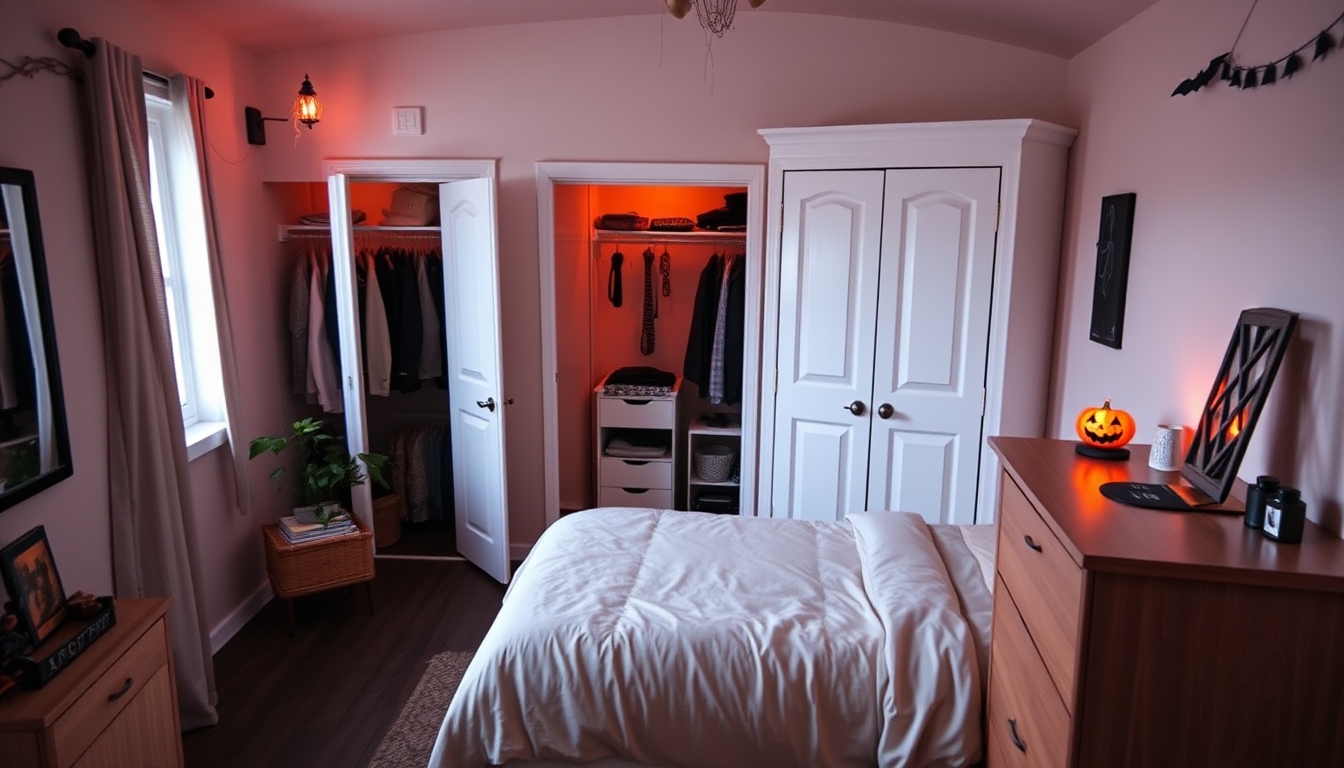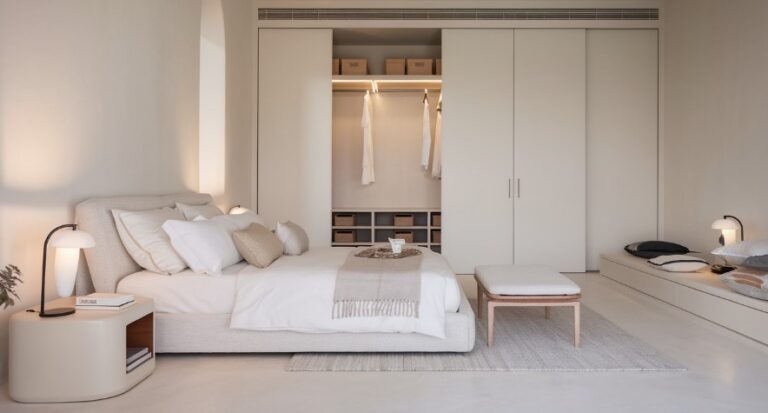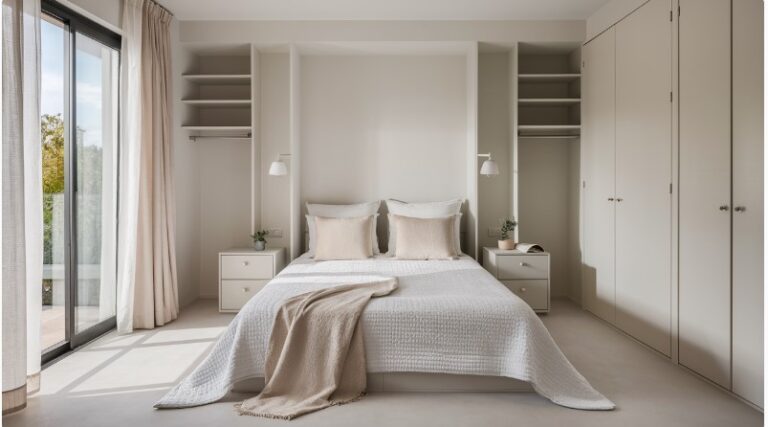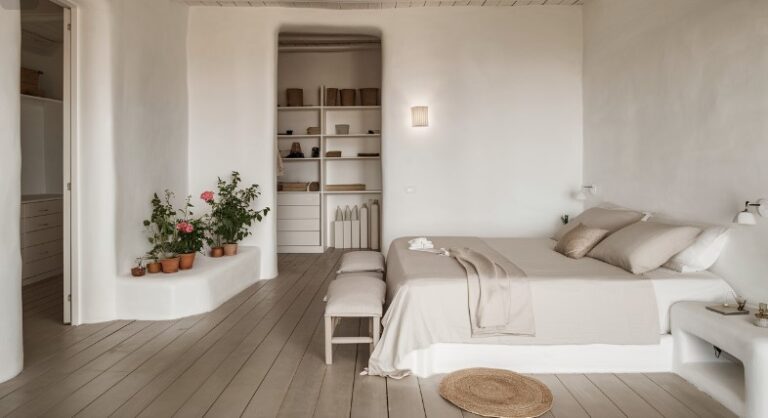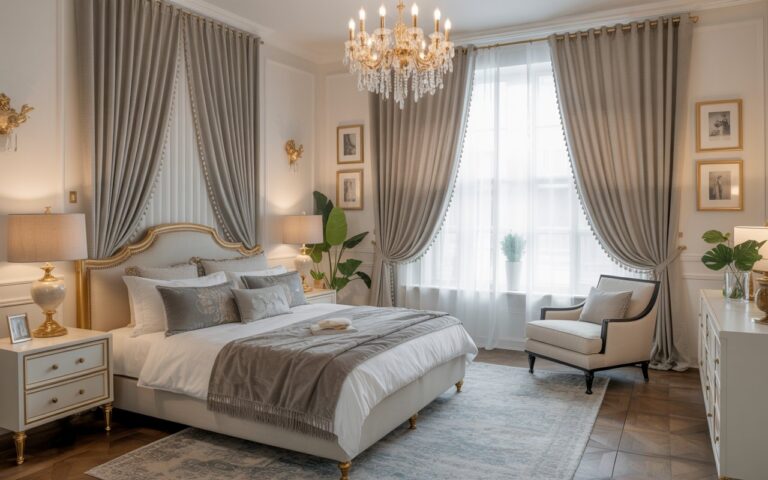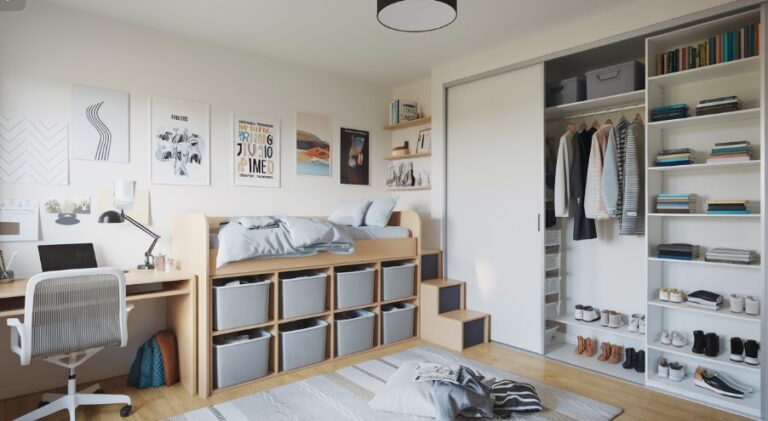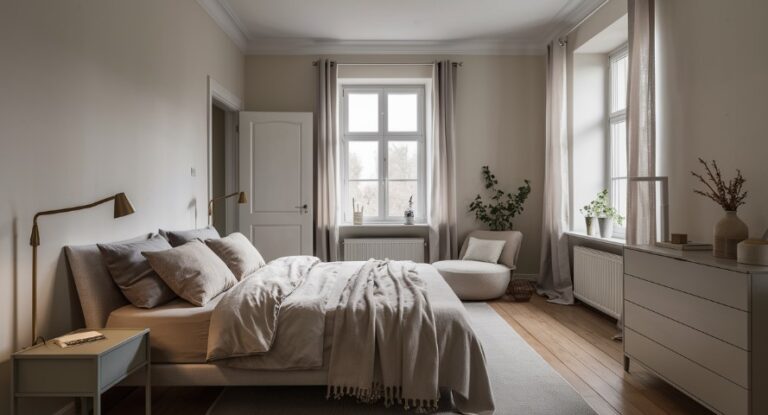Bedroom Decluttering For Beginners
Do you want a peaceful bedroom but do not know how to begin?
Decluttering might seem tough, but with some tips, it becomes easy. Soon, you’ll have an inviting space.
A clean bedroom is more than nice. It improves sleep, reduces stress, and enhances your day and night.
This guide is here for you. It shows what to keep or throw away. It tackles messy drawers, full closets, and cluttered surfaces.
Embrace simplicity. Create space. Enjoy a calm, minimalist bedroom. Let’s start!
1. Understanding Clutter
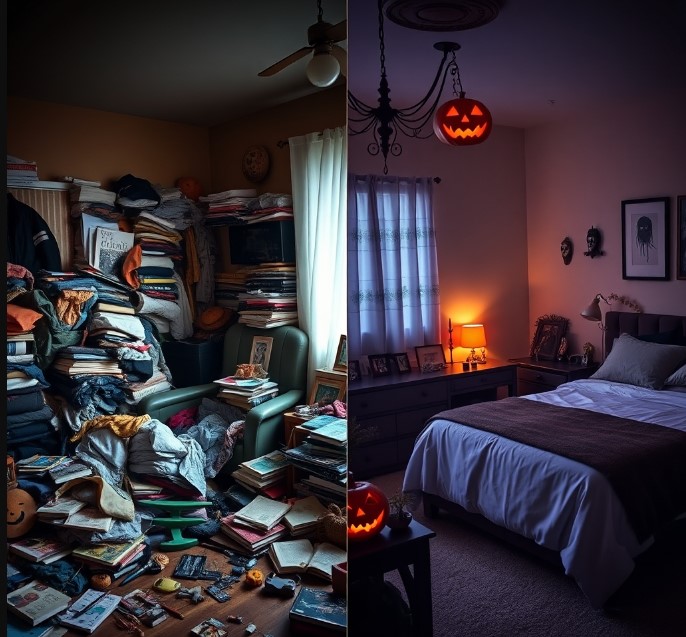
Definition of Clutter: Clutter in a bedroom includes items that lack purpose or joy.
This includes unworn clothes, disliked décor, unread books, and random objects.
Such items occupy space without adding value.
Psychological Effects: Clutter affects mental health.
Studies show that messy spaces increase stress. A cluttered room reminds you of unfinished tasks. This raises anxiety and makes relaxation difficult.
In contrast, a decluttered bedroom fosters calm. It’s easier to unwind and recharge.
Reducing clutter clears your space and gives your mind a break.
2. Preparing for Decluttering
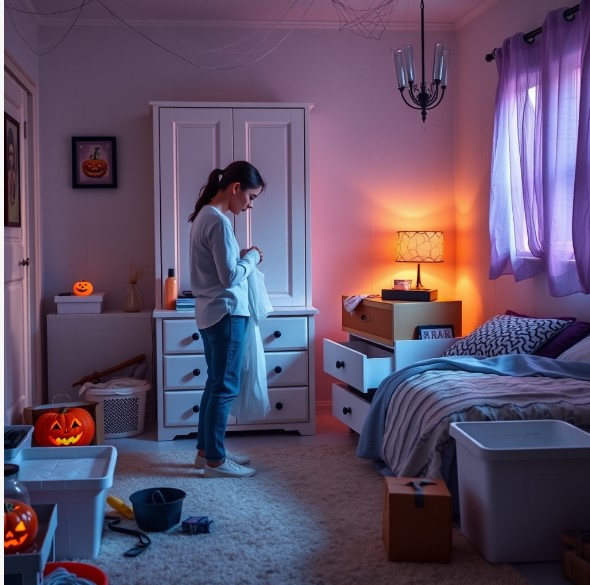
Understanding Clutter: Clutter isn’t stuff. It can sap your energy and create chaos. So, take a moment to review what’s piled up. Identify items with a purpose. Knowing why things accumulate helps you discard the unneeded.
Preparing for decluttering: First, make a plan. Start small, like with a drawer or a nightstand. This builds momentum without overwhelming you.
Set realistic goals: Avoid tackling everything at once. Instead, focus on small, achievable targets, like one room section at a time. Celebrate these wins. They keep you motivated and prevent burnout.
Gather Supplies: For a smoother process, gather the essentials. Get trash bags for discards, boxes for donations, and cleaning supplies. Having everything ready keeps you focused and ensures proper placement for each item.
3.Step-by-Step Decluttering Process
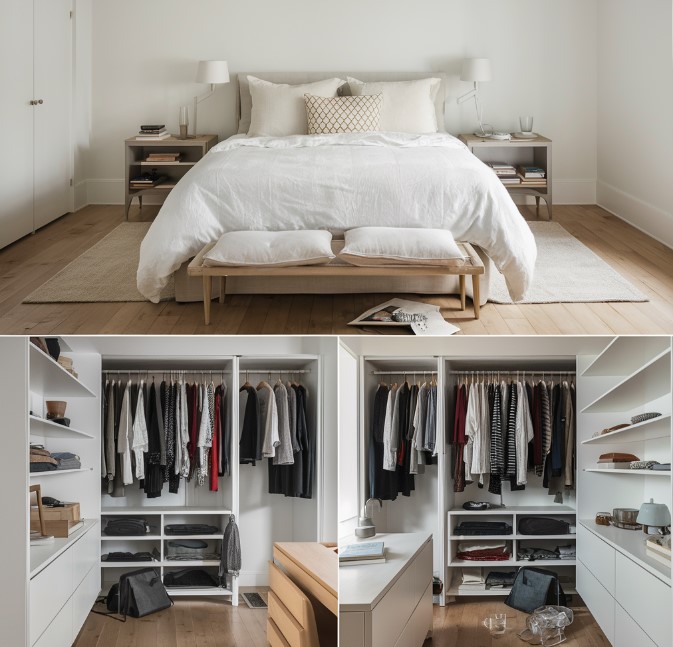
Start with flat surfaces. Begin by clearing off nightstands and dressers. Remove everything, then categorize each item into keep, toss, or donate piles.
Clutter often builds up on flat surfaces, in that a clear space can make the room feel more organized.
Tackle the floor. Remove any items lying on the floor, from shoes to storage boxes. A clear floor makes your bedroom feel more spacious. It also reduces clutter.
Organize your closet. Sort through your clothes and assess what you wear. Set aside items you haven’t used in a year. Donate or discard them. This will free up space for the things you love and use.
Make Your Bed. Commit to making your bed each day. This simple habit transforms your room’s appearance immediately. It sets a positive tone, encouraging you to tidy other areas.
4. Implementing Storage Solutions
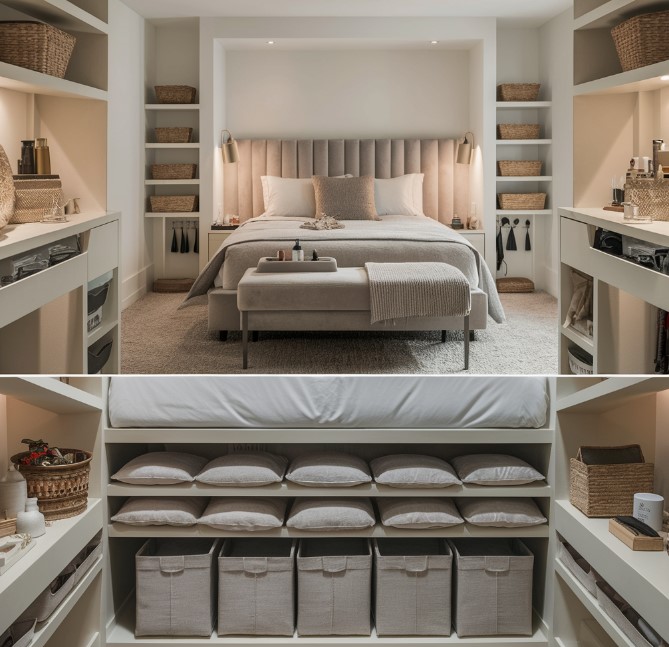
Smart storage keeps your bedroom tidy.
Use baskets and trays for small items, like jewelry, remotes, and skincare products.
Decorative baskets store items and boost your room’s style, hiding clutter.
A tray on your dresser or bedside table can hold everyday items, keeping surfaces tidy.
Under-bed storage is ideal for small rooms.
Wheeled boxes or bins are great for storing things. Use them for seasonal clothes, extra linens, and items that are rarely used.
This storage frees up closet space and keeps rarely used items organized.
Practical storage solutions ensure a clutter-free bedroom, giving everything a spot.
5. Maintaining a Decluttered Bedroom
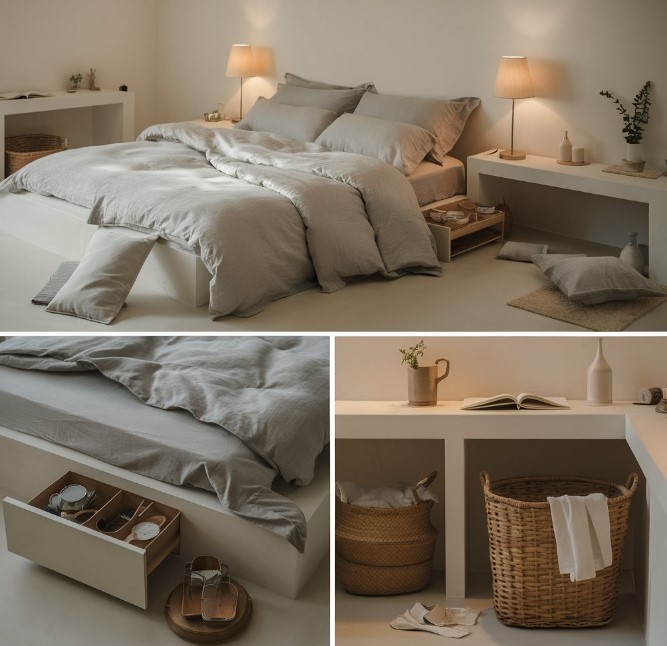
Keeping your bedroom clutter-free is easier when you develop simple daily habits. A quick evening tidy-up can make a huge difference in maintaining an organized space.
Each night, spend five minutes putting away any items that may have piled up. This includes clothes, books, and small things.
Make your bed each morning. It will tidy the room and set a positive tone for the day.
Choose a home for everything. Use a drawer for small items and a basket for laundry. This makes it easy to return things to their spots.
If you tend to accumulate cups or dishes, make a habit of taking them to the kitchen before bed.
Consistent practice of these small actions will keep your bedroom a relaxing space. It will prevent clutter from piling up and reduce the need for frequent deep cleans.
6. Creating a Relaxing Atmosphere
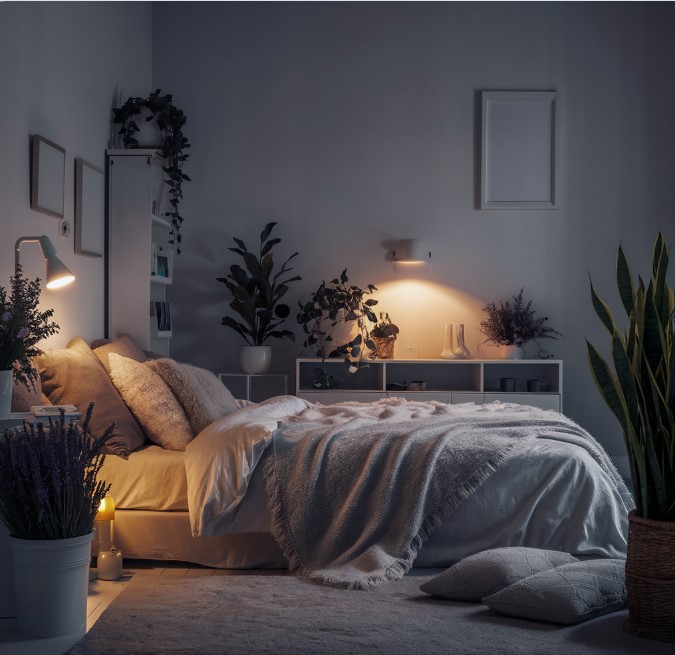
Creating a relaxing atmosphere in your bedroom goes beyond clearing physical clutter.
To unwind without interruptions, keep screens (like TVs and phones) out of the bedroom. It will help reduce distractions.
Digital clutter can hurt your sleep and relaxation. So, make your bedroom a tech-free zone for a peaceful escape.
Next, incorporate calming decor that promotes tranquility. Add a few houseplants to bring in nature. Lavender and snake plants can improve air quality and calm you.
Soft, layered lighting is another great addition, helping you create a cozy ambiance. Opt for warm-toned lights, such as a bedside lamp with a dimmer, to create a smooth transition from day to night.
These simple, intentional choices will make your bedroom feel serene. They will also support better rest and rejuvenation.
Conclusion
In summary, beginners can make their bedrooms calm and welcoming by decluttering. Focus on what is necessary and discard the rest.
Start small. Tackle one surface or area at a time. Keep items that are useful or have meaning. Name spots for these items.
Use simple storage and regular checks to avoid future clutter.
Decluttering is a continuous process. Aim for a bedroom that fosters relaxation and peace.
With patience and consistency, your bedroom can become a true retreat
1. What is the best way to start decluttering my bedroom?
To declutter your bedroom, first, make a plan. Pick a date and time.
Next, empty your drawers and closet. Sort items into four groups: keep, donate, discard, and move. Be honest about what you need.
Tackle one area at a time, like a drawer or a closet section. This prevents you from feeling overwhelmed.
As you sort, clean the empty spaces. Only return items you love or use. Give them a specific spot.
Maintain a tidy space. Check your items at regular intervals. For new ones, remove an old one. This creates a calm, organized bedroom.
2. How do I decide what to keep and what to throw away?
Deciding what to keep or toss involves a few steps. First, evaluate each item for usefulness, sentimental value, and condition.
If you haven’t used something in a year, consider discarding it. Ask if it adds value or takes up space.
For sentimental items, limit yourself, or use a memory box.
If you don’t miss it after a month, you can get rid of it.
Remember: “Keep only what you love and use.” This rule leads to a tidy, organized space.
3. What storage solutions are best for a decluttered bedroom?
When decluttering a bedroom, smart storage is the key to staying organized.
- Under-bed storage: Use bins or drawers for seasonal items and linens.
- Multi-Functional Furniture: Choose beds with drawers or ottomans with storage.
- Hanging organizers: Use over-the-door or wall-mounted shelves for easy access.
- Drawer dividers: Keep clothes tidy and visible in dressers.
- Baskets and Bins: Use baskets for blankets and books. Clear bins show what is inside.
These solutions boost functionality and keep the room looking clean.
4. What are common mistakes to avoid when decluttering?
When decluttering, avoid these mistakes. First, focus on one area or category to avoid feeling overwhelmed.
Don’t keep items out of guilt. If you haven’t used something in a year, let it go.
Set realistic goals. Trying to clear your whole home in a day can lead to frustration and burnout.
Create designated spots for items. Use storage solutions fully and establish a practical system.
Remember, decluttering takes time. Be patient and celebrate small wins.
5. How can I stay motivated during the decluttering process?
Stay motivated while decluttering by setting small, achievable goals. For instance, focus on one drawer or a corner of a room.
If you feel overwhelmed, picture a clean, peaceful bedroom. Use “before” photos to see your progress. Reward yourself after each goal, even if it’s a break or a small treat.
Make it fun by listening to upbeat music or podcasts. Always remember your reason for decluttering. Is it to find calm or to access items with ease?
Consider bringing a friend or family member along. This adds accountability and makes it more enjoyable. Remember, each step brings you closer to an organized, clutter-free bedroom.
